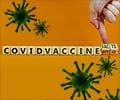A new study looked at COVID-19 infections in 16 urban centers in Canada to understand the factors that contribute to concentration in geographic areas.

‘Identifying COVID-19 hotspots enables better allocation of resources, tailoring of policies, and implementation of strategies that curb local transmission.’





To better understand the factors contributing to the concentration of COVID-19 infections in geographic areas, researchers analyzed provincial surveillance data from January 2020 to February 2021 in Canada."Understanding the factors associated with geographic patterns of transmission within cities can help identify the populations and, specifically, the contexts with the greatest risks," write Yiqing Xia, McGill University, Montréal, Quebec, and Huiting Ma, Unity Health Toronto, Toronto, Ontario, with coauthors.
There were 62 709 SARS-CoV-2 cases in BC, 15 089 in Manitoba, 239 160 in Ontario, and 215 928 in Quebec recorded in the 16 census metropolitan areas that were included in the study.
They accounted for 81%, 57%, 83%, and 80% of all confirmed cases in each province, respectively. Researchers observed concentrations of cases according to social determinants of health, such as income, housing, essential work, visible minority status, and more.
They found that visible minority status was the social determinant of health that was important across all cities, with variations in the others.
Advertisement
The 16 regions included British Columbia – Vancouver, Kelowna and Abbotsford–Mission; Manitoba – Winnipeg; Ontario – Toronto, Ottawa, Hamilton, Kitchener–Cambridge–Waterloo, St. Catharines–Niagara and Windsor; Quebec – Montréal, Québec City, Gatineau, Sherbrooke, Saguenay, Trois-Rivières.
Advertisement
Geographic hot-spot initiatives, such as vaccination rollouts and access to mobile testing with wrap-around support for quarantine and isolation, effectively reach and meet the prevention and care needs of communities at disproportionate risk of COVID-19..
Geographically prioritized allocation of resources and services that are tailored to the local drivers of inequalities in acquisition and transmission risk offer a path forward in the public health response to COVID-19 infection.
Source-Medindia















